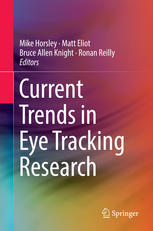

Most ebook files are in PDF format, so you can easily read them using various software such as Foxit Reader or directly on the Google Chrome browser.
Some ebook files are released by publishers in other formats such as .awz, .mobi, .epub, .fb2, etc. You may need to install specific software to read these formats on mobile/PC, such as Calibre.
Please read the tutorial at this link: https://ebookbell.com/faq
We offer FREE conversion to the popular formats you request; however, this may take some time. Therefore, right after payment, please email us, and we will try to provide the service as quickly as possible.
For some exceptional file formats or broken links (if any), please refrain from opening any disputes. Instead, email us first, and we will try to assist within a maximum of 6 hours.
EbookBell Team

4.7
26 reviewsOur eye movements in response to visual stimuli reveal much about how we experience the world. Focusing on the latest developments in the multidisciplinary field of eye tracking research, this volume ranges across a wide spectrum of research applications, with four sections covering the plethora of practical uses to which our expanding knowledge can be put. They offer abundant evidence that eye tracking research and its methodologies offer new ways of collecting data, framing research questions, and thinking about how we view our world. As a result, we are discovering more about how the visual system works, as well as how it interacts with attention, cognition, and behaviour. Current Trends in Eye Tracking Research presents the work of more than 50 researchers and academics, showcasing groundbreaking studies and innovative ways of applying eye tracking technologies to interesting research problems. The book covers the current output of a number of pioneering research laboratories, detailing their work on eye tracking and the visual system, alignment and EEG data, marketing and social applications, and eye tracking in education. Featuring creative uses of existing technology as well as inventive implementation of new technology in a range of research contexts and disciplines, this new publication is compelling proof of the growing importance of this exciting and fast-moving area of scientific endeavor.